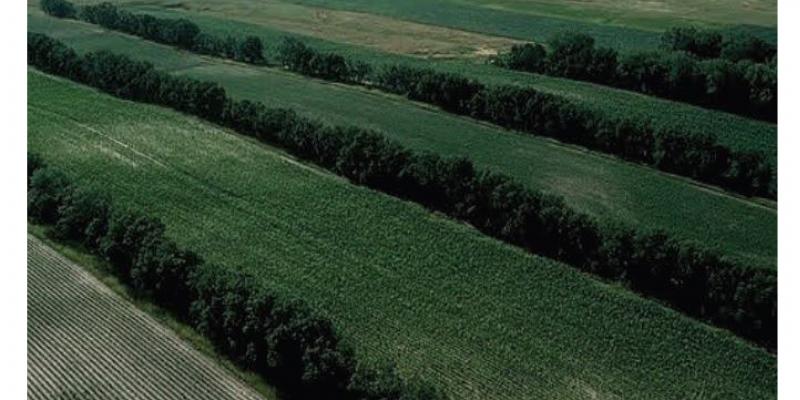WHY PLANT CONSERVATION TREES?

The first Nebraska settlers realized the value of trees. They planted millions of trees on barren homesteads to help fulfill their basic needs for protection, building material, fuel, and food. Planting trees became a Nebraska tradition, and Nebraska proudly became known as “The Tree Planter State”. Today, all Nebraskans benefit from the trees planted by our forefathers.
Trees continue to be an important part of Nebraska’s landscape. It is estimated that about 6 million trees in the state are needed annually. As an example, a shelterbelt planting can provide multiple benefits, including:
- Environment: Helpful in carbon removal and returns oxygen to the atmosphere.
- Crop Protection: Protects crops against drought by providing protection from wind and erosion from heavy rains.
- Livestock Protection: Reduces stress on livestock during the heat and winter storms.
- Wildlife Habitat: Provides over-winter refuges, nesting sites, pollen, and nectar sources and protects other habitats.
- Soil Conservation: Creates natural barriers that protect soil and crops.
- Water Quality: Trees and shrubs minimize soil erosion, stabilize stream banks in riparian areas, and remove soil contaminants.
- Food: Many trees and shrubs are a valuable source of fruit and nuts for humans and animals.
- Water Management: Can reduce surface water runoff and pollution to streams.
To develop a tree plan or order seedlings, contact LCNRD at 402-254-6758 or lcnrd.nebraska.gov/forestry. For information on developing a conservation tree plan, contact your local NRCS office. Orders come in bundles of 25 from LCNRD through March 31, 2023.
